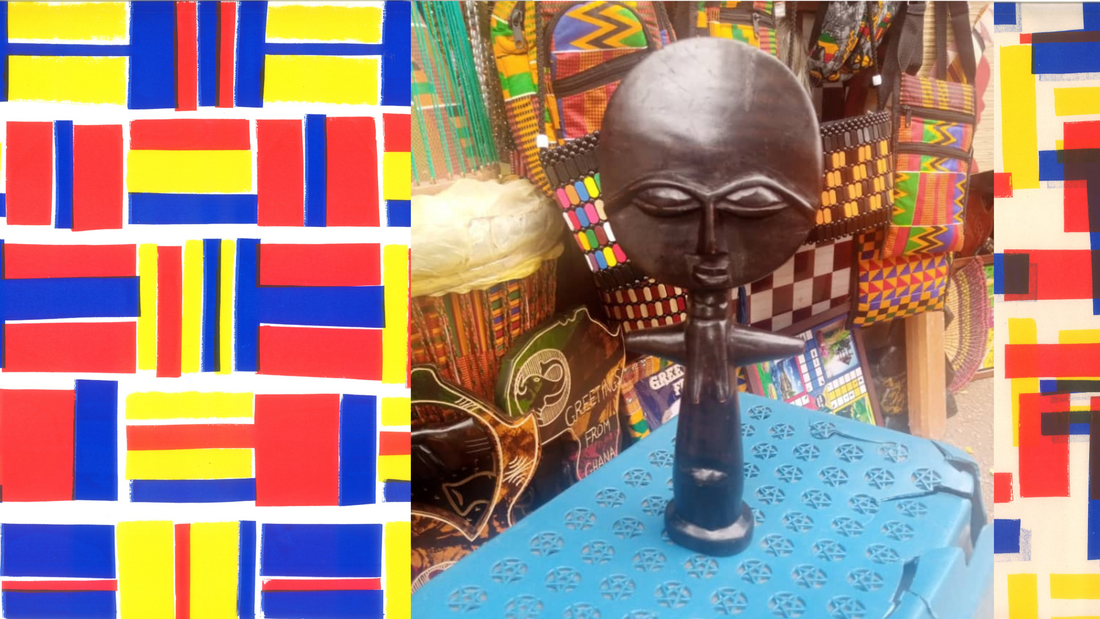
Akuba Dolls and their significance in Ghanaian traditional beliefs
Share
An exploration of the legend and subsequent usage of the dolls in Ghanaian culture.
By Gabby M S
Growing up in close proximity to some of the world's oldest and largest museums, I am used to seeing artefacts from all over the planet. Some of my favourite memories include class trips, disgusting school lunches and creative tasks related to various exhibits. Oh, and bomb threat evacuations from the British Museum.
Of course, whilst our syllabus and artistic descriptions tried to ignore it, rarely were these items acquired by peaceful exchange. The grim legacy of British colonialism is difficult to ignore, and the return of exhibits to their homelands has been contested on grounds of ‘ill equipped overseas museums’.
This isn't a piece debating if countries have the right to their own cultural assets, the correct answer is clear to anyone with common sense. Instead, it's an exploration of the fascinating Akua’Ba dolls of Ghana. There are a plethora of masks, weapons, pyramids, clothing and much more associated with African artefacts. Ghanaian Fertility dolls are also heavily featured and easily recognisable, with their small statues and designs. Often marketed to collectors as ‘exotic figurines’, or ritualistic dolls; I find their story and subsequent traditions particularly fascinating. The British Museum in particular has many in its collection, and it was one of these that sparked inspiration for this piece. You can learn more about it >here<
The legend of Akuba, matriarchal lineage in Fante tribes and a modern discussion on femininity and childbirth.
Akua is a barren woman in Ghanaian legend. Unable to have a child, she begs a traditional priest for assistance. He consecrates a wooden doll, in the image of a woman, and tells her to love and care for it like a true new-born baby. She returns to her village, ignoring the mocking and teasing from her neighbours, and carries the wooden figure on her back. Her dedication rewards her with a healthy baby girl soon after, resulting in the modern fertility practice of today. The title Akua’Ba directly translates to Akuba’s Child.
I find the story both inspirational, her unwavering dedication to motherhood and overcoming mockery; and sad. Womanhood and motherhood have gone hand in hand for generations, around the world. Even the word ‘barren’ which normally means land that is unable to produce quality crop, has been historically used to describe women. Women that were unable to bear children, even if it was to do with her husband's infertility, were regarded as failures at best and acBcused of witchcraft at worst. Relating directly to the Ghanaian context of the legend, Fante tribes are matrilineal. Akua’ba is therefore successful in not only bearing a child, but a girl.
Aku’Ba in Modern Ghana: Craftspeople and tourism
The fertility ritual of carrying Akua’Ba is still practised by some tribespeople in Ghana, but the dolls are now primarily made as examples of traditional craftsmanship and for tourism. They are normally made of wood and are carved in exaggerated likeness of Fante female beauty standards.
Akua’ba dolls in modern Ghana are strong examples of the beauty of cultural practices, and the determination to keep elements alive for future generations. For example, Jo Boateng's (my godmother) Akua maa jewellery collection is inspired by the features of the Akuaba doll.
End words
The legend of Akua and the subsequent craft are fascinating, and in my opinion deeply rooted in ideas of hope and perseverance. Outside of the ritual itself, the dedication to learning the craft and creating new figures for people around the world to enjoy; is also deeply inspiring. I hope this short summary and discussion provoked the same amount of interest in Akua’ba dolls as writing it did to me.
If you would like to find out more about the dolls and the region they originate from I will link some helpful resources below:
The Akuaba dolls in:
